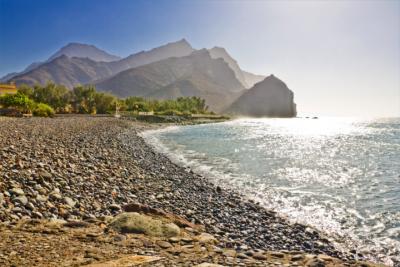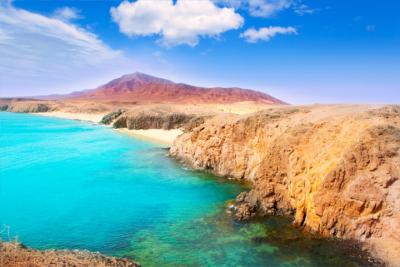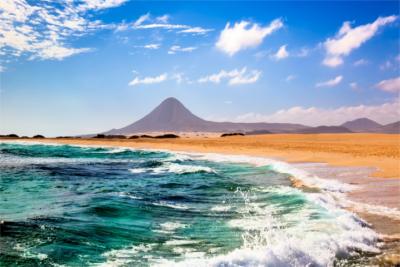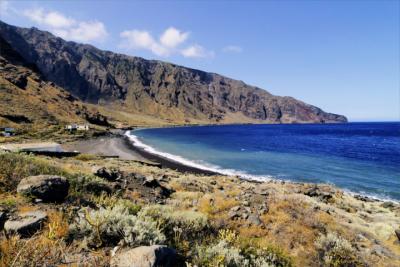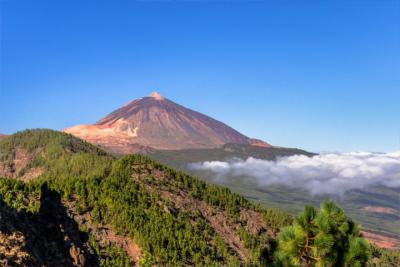Travel Offers
Travelmyne Featureprint
Distance
El Hierro - The Smallest Canary Island
El Hierro is a natural gem in the Atlantic Ocean. Due to its special landscape and remoteness, it is the ideal destination for lovers of nature and explorers. On holiday on El Hierro you encounter native nature and culture rather than mass tourism.

Geography - The Smallest island of the Canaries
El Hierro is the most western and the smallest (278 km²) island of the Canaries. Its highest peak is the Pico de Malpaso (1,500 m). The island is relatively sparsely populated with 10,500 inhabitants. Its climate hardly differs from that on the other Canary Islands. Due to El Hierro's geographical position and size, visitors can experience 3 climate zones here. Especially the north and south of the island differ with regard to climate. As the higher regions are located in the north, it is several degrees colder and more humid there than in the flat, southern part of the island.

Nature - Junipers and steep coasts
El Hierro's landscape is very varied. The island's south is characterised by lava formations and slag deserts. While you see stone pine and laurel forests in the west, there are fruit plantations and vineyards in the south and north. Rocky, steep and sloping coasts, which are only accessible in parts, frame the island. Lovers of nature will definitely enjoy holidays on this island. El Hierro impresses with wonderful scarps, natural forests, deep gorges and unique bays. The island has not been declared a biosphere reserve by the UNESCO for no reason. It offers a variety of natural sights. In the western part of the island you find the juniper grove El Sabinar. It is dominated by tree tops which have been pressed against the ground by the strong wind and remain in this position to the present day. Together with the fog caused by the weather, this grove constitutes El Hierro's landmark. Furthermore, there are many observation points (miradores) on the island, from which you can marvel at El Hierro's nature and landscape. The most famous one is probably Mirador de la Peña. An extraordinary attraction is the Lagatario Museum, a breeding station for the rare Komodo dragons. These reptiles were considered extinct but they were rediscovered by a hiker in 1970 and are a protected species now.

Culture - Native inhabitants from the Stone Age and a patron saint
El Hierro was considered the world's most western point before the discovery of America and the prime meridian until 1853. The island's native inhabitants, the Bimbaches, had a complex social structure but they lived like the people in the Stone Age. This ended when the island was conquered about 500 to 600 years ago because the Bimbaches were suppressed and enslaved by modern discoverers. In Franco's times (1936-1977) El Hierro became known as the island for banned critics of the regime. Visitors can learn more about the development and history of the island's population in the Guinea Ecomuseum Cultural Park (an archaeological and ethnographic museum). In den Casas Guinea, a group of old houses, you can get a feel for the lifestyle of the island's former inhabitants. Special cultural highlights on the island are the Bimbache openART Festival, which exhibits contemporary art, and the procession of Virgen de los Reyes, which honours the island's patron saint. Since 1974, the virgin of the three Magi (Nuestra Señora de los Reyes) has been celebrated every four years in this parade of 28 kilometres of length as well as on many holidays, usually accompanied by processions, dances and Canarian wrestling matches. Canarian wrestling is the number one sports on El Hierro and it is characterised by simple rules. The wrestler who first touches the ground (with any body part except for his feet) is the loser. Another speciality on El Hierro are the dancers bailarines. They perform at religious celebrations and are a regular feature of processions. Their costumes consist of skirts, trousers and short aprons and their music is characterised by castanets, drums and concert flutes. Worthwhile towns on El Hierro are the capital Valverde with the church Santa María de la Concepción (the island's main church), La Frontera with its village church as well as the well-known bell tower and El Pinar. Another interesting sight is the lighthouse Faro de Orchilla at the island's western tip, which was considered the primal meridian for a long time and provided the basis for many maps. Furthermore, there is a fascinating open-air museum in the El Golfo Valley.

Experience - Fish and queso herreño
Holidaymakers can discover many culinary specialities on El Hierro. As the island and its restaurants have been spared from mass tourism so far, there are many opportunities of enjoying and getting to know the native cuisine. The main food is without doubt fish, which is caught and prepared freshly here. The well-known Canarian papas arrugadas ("wrinkled potatoes") are served with it. In addition, visitors can taste goat meat, small tortillas stuffed with cheese (quesadillas) and a vegetarian gofio purée (made from cereal and many other ingredients like raisins, bananas or honey) during a meal on El Hierro. There is hardly any industry on the island. Its main sources of income are tourism, agriculture and fishing. A special product is the queso herreño. This famous cheese is made of three types of milk: cow's, goat's and sheep milk. Besides this dairy product, art handicraft like weaving, pottery or carvings are beautiful souvenirs.

Activities - Discovering nature on diving, hiking or cycling tours
Holidays on El Hierro are not suited for package tourists. There are several beautiful beaches on the island (e.g. Playa del Verodal, Las Playas, Playa de Timijiraque) and several breakwaters as well as natural pools, in which you can bathe all year. However, El Hierro is much more suited for divers, hikers and mountain bikers. Natural pools and diving areas offer crystal clear and clean water as well as a colourful and diverse underwater world for diving tours. In addition, many diving courses are offered, for example in the diving school in La Restinga. Hikers can pursue their hobby and enjoy the native landscape of the smallest Canary island on trails in the middle of forests, mountains and lava rocks. A popular hiking destination is the peak of the Malpaso. Since the weather often changes quickly, it is important that you carry both swimwear and rainwear. Cycling is also possible on El Hierro. Mountain bikers can explore the island on lava pistes far from the roads.

Information
Travellers most commonly reach El Hierro by taking a ferry from one of the neighbouring islands but one-hour flights from Gran Canaria or Tenerife are also possible. The best means of transport on the island is renting a car because the public transport network is not very well developed.
El Hierro is of particular interest to lovers of nature, hikers, divers and mountain bikers. It does not contain many bathing beaches or hotels so that calm and tranquillity dominate the island life.

